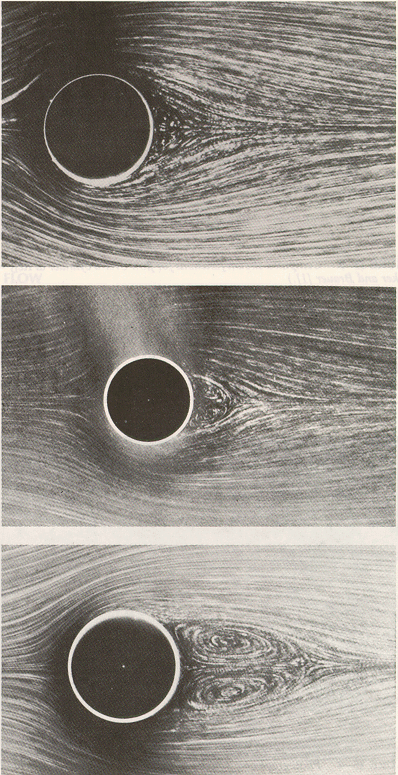
The Stokes solution holds well for flows at Re < 1. When
the Reynolds number exceeds this, no soluntions to the Navier-Stokes equation
are known, though a large amount of quatitative information has been learned
from decades of
experimentation and observation.
For 1<Re<130 a seperation of the boundary layer begins to occur
on the downstream side of the sphere, with vortices forming in the small
pocket in the lee of the sphere. (pictures 2 & 3 below)

source: http://aries.www.media.mit.edu/people/aries/mas864/book-cylinder2.gif
This bottom picture gives a good view of the boundary seperation, which is occuring about 45 degrees from the right (downstream) side of the sphere. The seperation remains very laminar and smooth. This picture is only a 2D image of what is occuring, but the sphere is symmetrical, so the two vorticies are actually part of a single ring (vortex donut as I like to think) that sits inside this area of boundary seperation.
As the Reynolds number is increased above ~130 the vortex ring begins
to irregularly shed, creating turbulence farther back in the wake.
The location of seperation also begins to move upstream, making the wake
wider and thereby increasing the drag. At a critical value of the
Reynolds number, the previously laminar seperation layer becomes turbulent,
and the point of seperation jumps downstream. This correspondes with
a sudden drop in the drag because of the decrease in the size of the wake.

source: http://poisson.caltech.edu/fluids/handouts/turbulence.html
Above you can see that the seperation layer is no longer laminar.
This typically occurs at Re~ 500,000.